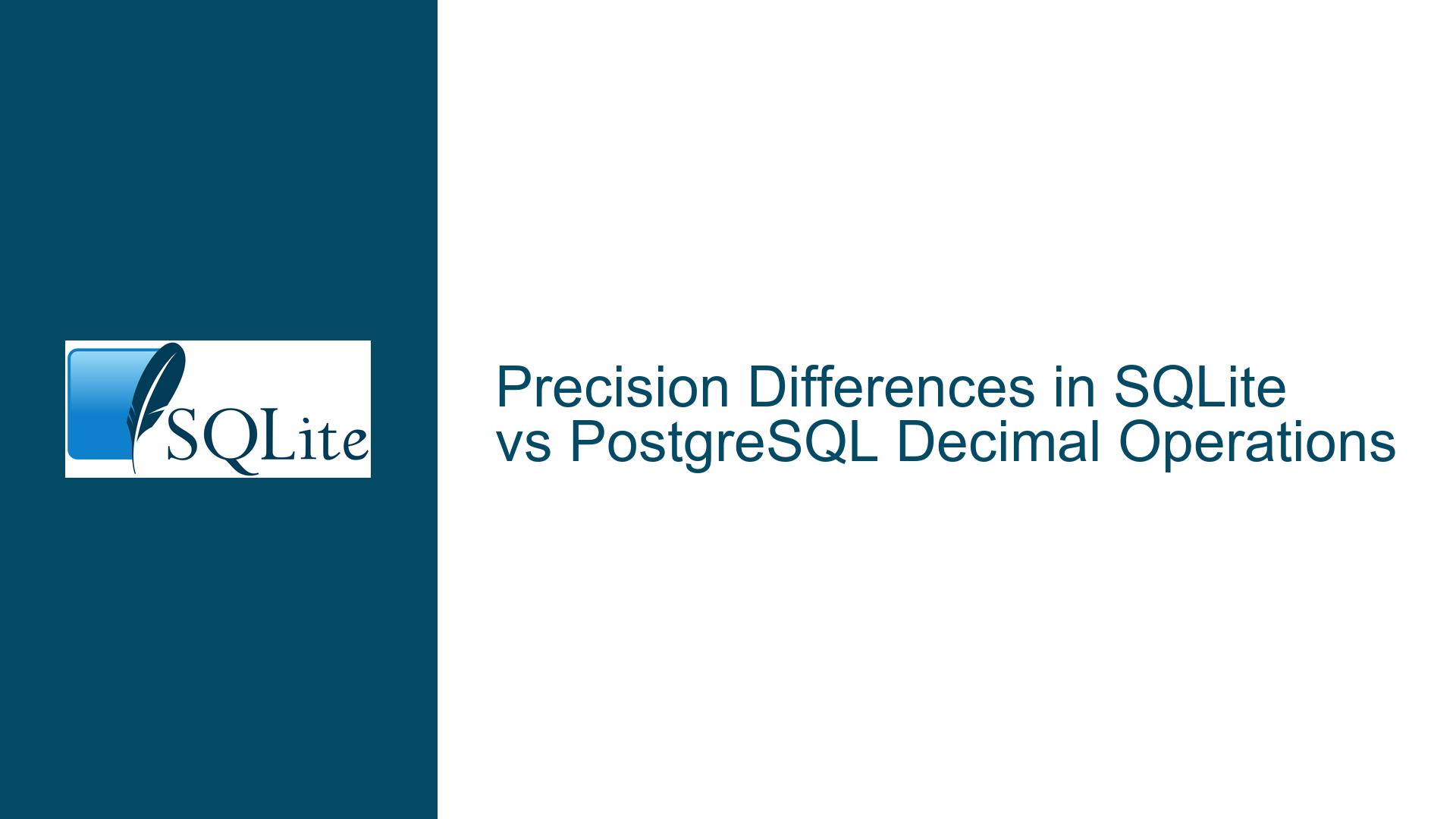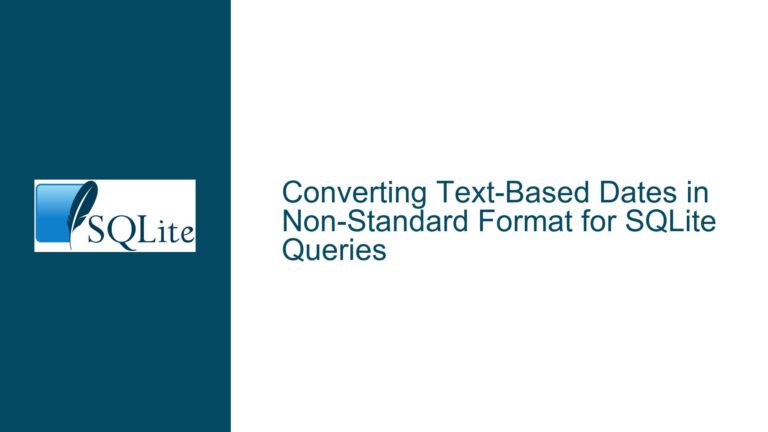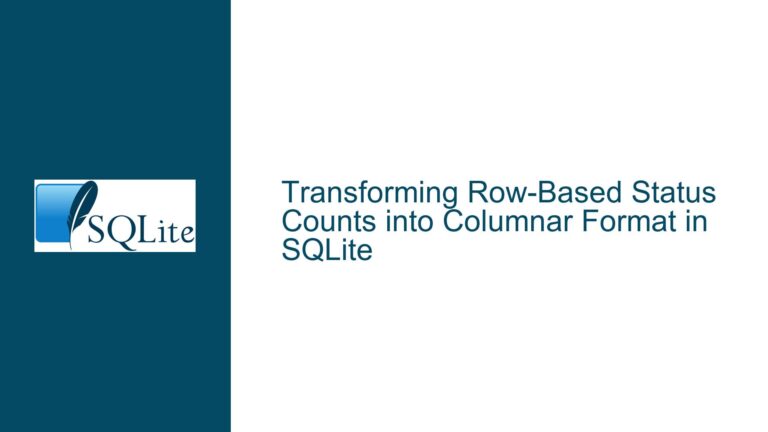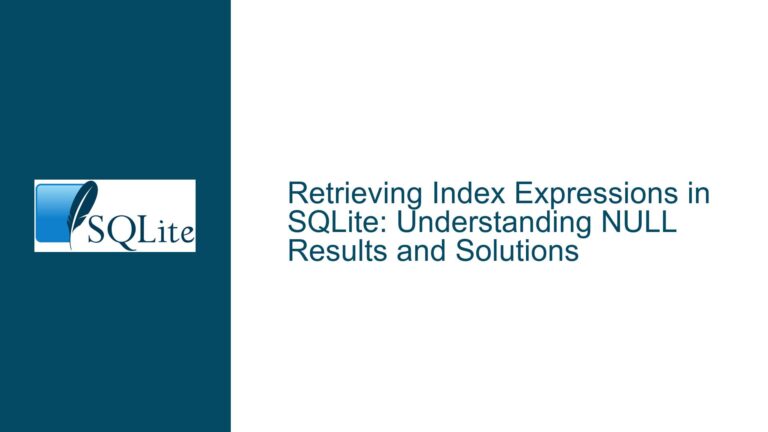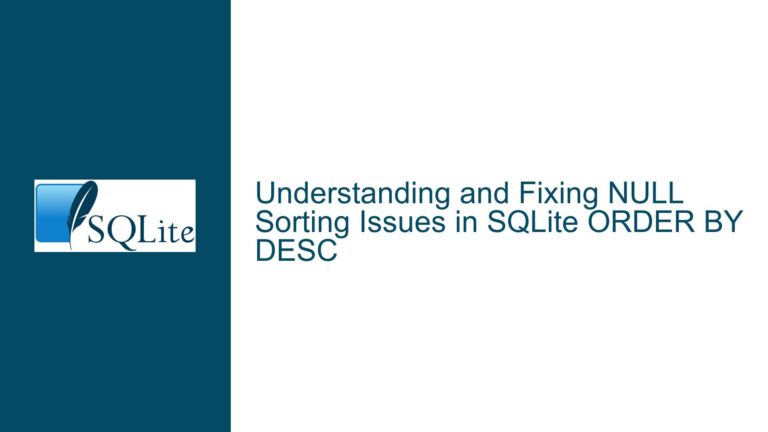Precision Differences in SQLite vs PostgreSQL Decimal Operations
Understanding the Precision Discrepancies in Decimal Operations
When working with decimal operations in SQLite and PostgreSQL, it is crucial to understand the underlying mechanisms that govern how each database handles precision. The discrepancies observed in the outputs of the provided test cases stem from differences in how SQLite and PostgreSQL manage decimal arithmetic, storage, and formatting. SQLite, by default, treats all numeric values as either INTEGER or REAL (floating-point numbers), whereas PostgreSQL has a dedicated DECIMAL type that allows for arbitrary precision arithmetic. This fundamental difference in type handling leads to variations in how calculations are performed and how results are displayed.
In SQLite, the REAL type is a 64-bit floating-point number, which inherently introduces rounding errors due to the limitations of binary floating-point representation. PostgreSQL’s DECIMAL type, on the other hand, is designed to maintain exact precision by storing numbers as strings of digits with a fixed number of decimal places. This distinction is critical when performing arithmetic operations, as it directly impacts the accuracy of the results. The observed discrepancies in the test outputs are primarily due to SQLite’s reliance on floating-point arithmetic, which can introduce small errors (often within 1 Unit in the Last Place, or ULP) during calculations.
Another factor contributing to the precision differences is the way SQLite and PostgreSQL handle text-to-number conversions. In SQLite, numeric values stored as TEXT are converted to REAL for arithmetic operations, which can lead to minor inaccuracies during parsing. PostgreSQL, with its DECIMAL type, avoids this issue by maintaining the exact representation of the number throughout the operation. These nuances in type handling and conversion are essential to understanding why the results differ between the two databases.
Root Causes of Precision Discrepancies in SQLite
The precision discrepancies observed in SQLite can be attributed to several factors, including its handling of floating-point arithmetic, the absence of a dedicated decimal type, and the way it performs text-to-number conversions. SQLite’s REAL type, which is used to represent floating-point numbers, is inherently limited by the precision of 64-bit IEEE 754 floating-point numbers. This limitation means that certain decimal values cannot be represented exactly, leading to rounding errors during arithmetic operations.
For example, when performing operations like addition, subtraction, or multiplication on decimal values stored as TEXT, SQLite first converts these values to REAL. This conversion process can introduce small inaccuracies, especially when dealing with numbers that have many decimal places. These inaccuracies are then propagated through subsequent calculations, resulting in outputs that differ slightly from those produced by PostgreSQL, which maintains exact precision throughout the operation.
Additionally, SQLite’s lack of a dedicated decimal type means that it cannot perform arbitrary precision arithmetic. This limitation becomes apparent when dealing with financial or scientific calculations, where exact precision is critical. PostgreSQL’s DECIMAL type, in contrast, allows for precise calculations by storing numbers as strings of digits, ensuring that no precision is lost during arithmetic operations. This difference in type handling is a significant factor in the observed discrepancies.
Resolving Precision Issues in SQLite Decimal Operations
To address the precision issues in SQLite, several strategies can be employed, including the use of extensions, careful schema design, and alternative approaches to handling decimal arithmetic. One effective solution is to use the decimal extension for SQLite, which provides support for arbitrary precision decimal arithmetic. This extension allows SQLite to perform calculations with the same level of precision as PostgreSQL, eliminating the discrepancies observed in the test outputs.
To implement the decimal extension, you first need to load it into your SQLite environment. Once loaded, you can define custom functions for decimal arithmetic, similar to those used in PostgreSQL. For example, you can create functions like decimal_add, decimal_sub, and decimal_mul to perform precise arithmetic operations. These functions can then be used in your queries to ensure that calculations are performed with the desired level of precision.
Another approach is to store decimal values as TEXT and perform calculations using external libraries or tools that support arbitrary precision arithmetic. This method involves extracting the values from SQLite, performing the calculations in a controlled environment, and then storing the results back in the database. While this approach requires additional steps, it ensures that the calculations are performed with the necessary precision.
In cases where the use of extensions or external tools is not feasible, careful schema design can help mitigate precision issues. For example, you can store decimal values as integers by scaling them up by a fixed factor (e.g., storing monetary values as cents instead of dollars). This approach allows you to perform integer arithmetic, which is exact, and then scale the results back down when needed. While this method requires additional logic to handle the scaling, it can be an effective way to achieve precise calculations in SQLite.
In conclusion, the precision discrepancies between SQLite and PostgreSQL in decimal operations stem from differences in type handling, arithmetic mechanisms, and text-to-number conversions. By understanding these differences and employing strategies such as using the decimal extension, careful schema design, or external tools, you can achieve the desired level of precision in SQLite. These solutions not only address the immediate issues but also provide a foundation for handling decimal arithmetic in a robust and reliable manner.
